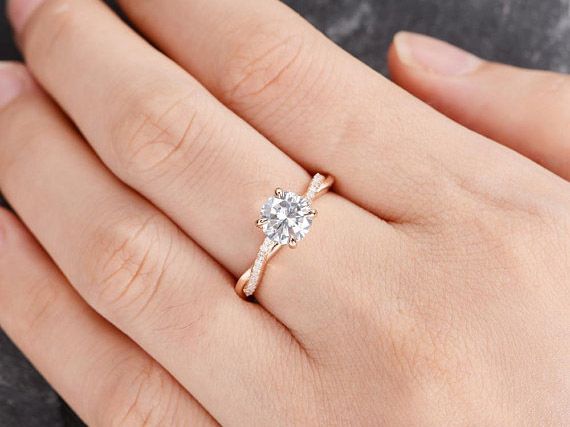Rings and jewellery are pieces of art. Making then requires artistic vision and craftsmanship. One needs to have knowledge of stones and metals to understand how they can be shaped and turned into attractive jewellery pieces. All jewellers have been in the profession for a good while to understand how metals and stones can be worked with. Here are a few ways diamond rings are made and perfected.
- Casting
Casting is one technique of making a ring, wherein a mould with a detailed design is created. It is quite cost effective as the mould or cast can be used to create multiple, identical rings. The design is made of wax, which can be easily shaped and carved as per the plan. The wax model can be created by a skilled craftsman or by using a 3D model. Plaster is poured to encase the wax ring and then it is dried. Once dry the plaster is baked at high temperatures, ensuring that the wax will evaporate and leave an empty mould. Then hot metal can be poured into this to create the ring band.
- Traditional techniques
Hand forging is a traditional technique of making the ring where the metal wires are shaped into the ring design. The craftsman will cut, hammer and polish to create the jewellery. The production cost is higher and there could be variations in the ring. This means a truly unique ring. The metal wires are bent into shape and it is closed by soldering. Depending on the design, there may be rims for the stone setting in which the stones are added.
- Choosing the stones
Once the bands have been created with precious metal, stones are added to them. The jeweller will choose the stone carefully, and although they look similar to the naked eye, a person with experience can value the stone better. Depending on what the stone is, the cut and clarity will play a role in this. Depending on the customer’s choice, the rings could have natural diamonds or be lab grown diamond rings.
Types of finishing
Once the rings are made and stones mounted, it is ready for finishing. After any product is created, it needs to be finished. The same applies to jewellery too. Following are the common types of finish a ring can have:
- Satin
Satin is a polished look without a shiny and glossy appearance on the ring. Smooth to touch, but it has a matte look and is very classy. A satin finish is the second popular finish on rings after the shiny type and is used by many.
- Shiny
The shiny or polished finish is common on wedding bands and engagement rings. This type of finish brings out the look of the metal and makes the gold or platinum look better. The appearance is reflective and highlights the brilliance of the metal.
- Cut
Diamond cut patterns are created on the finished using a machine. The finish has diamond-shaped facets, all over the length of the band. The glossy look captures light and looks impressive.
- Sandblasted
The finish of this type of ring has a grainy texture, just like sand. The textured, matte style makes it look slightly bumpy. It would seem it has been blasted by sand and that is why the name sandblasted.
One can find these and many more styles of finishing if you visit an experienced jeweller. Popular markets can also provide good options like Hatton garden engagement rings. A good jeweller will advise and guide the customer on choosing the ring style and finish, so visit one judiciously to get the best.
